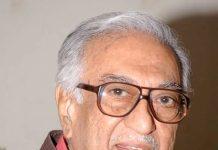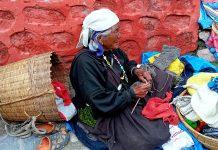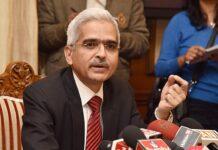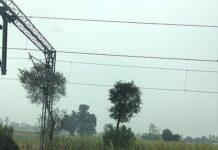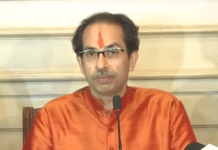In the case of COVID-19 pandemic, the herd immunity would develop if the entire population is allowed to get infected, and over the course of time, develop antibodies and get cured. However, a major concern here is that the population with a weakened immune system would be more vulnerable and prone to developing severe disease symptoms. This category refers to the elderly population especially those with pre-existing disease conditions. Thus, in the initial stages of the advent of the disease, the best option is to practice social distancing/quarantine to protect the population and delaying the onset of disease as much as possible till we understand the nature and course of the disease and till a cure is available in the form of a vaccine.
But some people argue that social distancing is ultimately not good because it hinders developing ‘herd immunity’.
More than 210 countries in the world have now been infected with the novel coronavirus. The global pandemic has forced nations to undergo lockdown and promote social distancing (people maintaining a distance of at least one meter from each other) protocols in all public spaces to slow the spread of the disease. With no reliable cure and vaccine in sight, this appears to be the best possible option to combat the spread of the disease.
Herd immunity has been in the news recently due to the COVID-19 pandemic where various experts across the world are developing strategies to combat the disease. The countries are grappling with the options of either adopting social distancing/quarantine by implementing strict lockdown, in which people are prevented from contracting the disease by keeping them in isolation as far as possible or allowing them to contract the disease and develop herd immunity. The choice of option depends upon several factors that are directly related to COVID-19 such as the severity of the disease, incubation time of the virus and its clearance from the body, virus vulnerability in different climatic conditions and indirect factors such as preparedness of the medical system to handle and care for the infected individuals, availability of protective equipment for medical personnel and general public and the economic strength of the countries.
In the case of COVID-19 pandemic, the herd immunity would develop if the entire population is allowed to get infected, and over the course of time, develop antibodies and get cured. However, a major concern here is that the population with a weakened immune system would be more vulnerable and prone to developing severe disease symptoms and eventually die as they won’t be able to develop effective antibodies. This category refers to the elderly population especially those with pre-existing disease conditions such as cancer, asthma, diabetes, heart disease etc. that causes immune system to become compromised and make individuals more vulnerable. Thus, in the initial stages of the advent of the disease, the best option is to practice social distancing/quarantine to protect the population and delaying the onset of disease as much as possible till we understand the nature and course of the disease and till a cure is available in the form of a vaccine. More importantly, this option not only allows governments to buy time to develop medical infrastructure and related paraphernalia to effectively fight the disease but also start researching on developing diagnostic tests and vaccine development. This is more relevant to developing countries like India who do not possess the relevant medical infrastructure and systems to deal with such a pandemic. The downside of this will be the huge economic and psychological drain on countries. Therefore, it is difficult to choose which option to implement between social distancing and herd immunity.
The developed countries, on the other hand, possess the desired medical infrastructure to deal with such a pandemic and believed that developing herd immunity would be a better option. Countries such as UK and others in the European Union allowed people to contract COVID-19 without imposing social distancing and implementing measures to deal with the vulnerable population. This resulted in huge number of mortalities especially in elderly population with co-existing conditions that resulted in an immune compromised system as described in para 4 above. Where these countries went wrong is that they failed to assess the fact that they possess a huge percentage of elderly population and exposing them to such a disease would have serious consequences. These countries went ahead with the thought of protecting the economy without understanding the nature and severity of the COVID-19 disease and mistakenly overlooking their demographic population distribution.
India, on the other hand, played safe and implemented the practice of social distancing by implementing strict lockdown right from the start when COVID-19 entered, albeit at the cost of economic consequences. The advantage India had was that the nature and severity of the disease was already known based on its occurrence in the other countries and the lessons learned from the mistakes performed by the developed countries. Even though India has a demographic advantage of possessing a majority of young population versus elderly, the sheer number of elderly populations may still be equivalent to the number in the developed countries. India thus, chose to protect the entire population along with the vulnerable elderly by maintain social distancing through implementing strict lockdowns. This not only has given India enough time to develop measures to fight COVID-19 in terms of development of diagnostic tests, testing available drugs against COVID-19 and equipping hospitals to cater to infected cases but also resulted in less mortality.
With the current available knowledge about COVID-19, India can develop appropriate strategies going forward. Almost 80% of infected individuals (this percentage definitely refers to younger population without any pre-existing conditions) are asymptomatic which means they are capable of recovery but can transmit the disease to others. A recent study in UK revealed that even the elderly population (average age 72 years) is capable of recovering from COVID-19 if they don’t possess any other pre-existing disease that compromises the immune system. India can now look forward to relax the lockdown in a phased manner to ensure continuity of life and allowing people to develop herd immunity slowly.
***
Authors: Harshit Bhasin
The views and opinions expressed on this website are solely those of the author(s) and other contributor(s), if any




